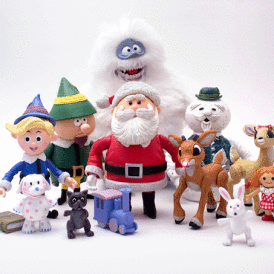Every day, your kids watch you spend money. You buy groceries. You purchase a pair of new shoes. You hand over your credit card or some hard-earned cash, often with one or two little people standing by your side observing.
Now, I think it’s a safe bet that, at some point in time, your kids have tried to negotiate with you for something that costs money. Maybe they begged for candy while waiting in line at the checkout. Perhaps they pleaded for a toy in the department store. Maybe they asked for demanded a treat from the dessert menu as you ordered dinner. And what was your response?
“You already got something last time.”
“No, and don’t ever ask again!”
“Okay, but just one thing.”
“Did you bring your spending money to pay for it?”
Bottom line is, you know that your kids know that cash is a commodity. (“Oh, that $10 bill can get me THAT toy!”) But what they might not fully comprehend are the origins of that commodity. For their sake as well as your own, they need to understand the concepts of earning, saving, setting a budget and, yes, spending.
One of the most important things you can teach your kids is how money works. And like that dreaded sex talk, the “money” talk should happen sooner rather than later. The good news is that it can come in stages that are appropriate to the situation and to your child’s age (just like the sex talk), so you don’t have to worry about explaining the national deficit and the Dow Jones Industrial Average when all your kid wants to know is where can he get a dollar to buy that Big League Chew.
Here are five important financial lessons to teach your kids now.
1. Money is (in most cases) earned. Assigning regular chores to your kids is the fastest way to teach them the importance of earning money for themselves. From making their beds in the morning and putting away their toys, to setting the dinner table and feeding the dog, the jobs can be as large or small as you’d like to designate. The important thing is to make sure the jobs are done well—not drill-sergeant-inspection well, but decent enough that you know they made an effort. While not all child psychologists agree that tying payment to a child’s regular chores is necessary, most feel it’s OK for kids to receive money for special jobs, like helping Dad clean the garage or changing the fish tank. Whether you dispense this cash for overall household responsibilities, or simply dole it out on a per-job basis, the point is that your child learns that money is earned through hard work.
2. Save for a rainy day. One of the biggest lessons is that not all earnings must be spent, and that money comes the responsibility of choice. Have the kids save their money in a safe place (a wallet, a small box or an envelope will do), and show them how to count and keep track of their savings. Smaller children might get a kick out writing down their “deposits” in a checkbook you can pick up from a bank. When they get older, they can open a real checking account to “save” for bigger purchases. Like college. Or a car.
3. Be practical about spending. When your kids have decided they really want to buy something, help them to calculate whether they have enough to make the purchase—and, if not, figure out how much more they need. This exercise not only sharpens math skills, but also teaches the importance of prioritizing and making wise choices. My kids often hear me say that I won’t buy something because it’s “not in our family budget.” No further explanation is needed. I was amazed to see that once my daughters began using their own money, suddenly they began thinking twice about whether they really wanted that toy before spending their hard-earned dough.
4. Don’t forget to give. We all understand the importance of teaching kids how to save and spend wisely. But also must teach them to give some of it away. When your children receive their allowance, it’s a great idea to designate a portion of it for saving, a portion for spending, and a portion for giving. The giving amount could go toward anything from buying a birthday present for a beloved family member or friend, to contributing to a favorite charity. Some organizations, such as the World Wildlife Foundation, are particularly kid friendly; the WWF allows children to relegate their money toward saving an endangered animal, and even mails them stickers to acknowledge their donation.
5. Be resourceful. Yes, they want something. Teach them that instead of sitting around whining about it, it’s much more effective to get out there and figure out a way to earn it. Kids are pretty creative when they are allowed to be, and their ideas may amaze you. From assembling a lemonade stand to babysitting, they’re bound to come up with some sure-fire ways to earn a little spending money. (Melissa & Doug’s super-cute lemonade stand could be a great investment for the budding entrepreneur.)
To help kick off your money conversations, here are a few great books for both you and your kids:
1. Betty Bunny Wants Everything by Michael Kaplan (ages 3 to 5) revolves around an irresponsible protagonist with big ears and even bigger eyes (she wants everything alright), to introduce preschoolers to the concept of saving.
2. Smart Money Smart Kids: Raising the Next Generation to Win With Money by Rachel Cruze and Dave Ramsey equips parents to educate their children about earning, spending, saving and giving—including the pitfalls of getting into debt.
3. National Geographic Kids Everything Money by Kathy Furgang (ages 8 and up) employs fun facts and (of course) beautiful photography to introduce older kids to a wide range of money-related topics.
4. A Smart Girl’s Guide to Money by Nancy Holyoke (ages 9 and up), from the excellent American Girl tween book series, uses quizzes, tips and quotes from girls to make learning about money, saving and smart shopping fun.
5. Little Critter: Just Saving My Money by Mercer Mayer (ages 4-8) is a valuable story for early-grade kids who are just beginning to grasp the concept of money as a commodity.
The next time your child whines for a toy, you’ll be ready to teach them the way the real world works—setting them up for a future of financial success.





















